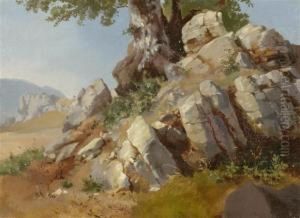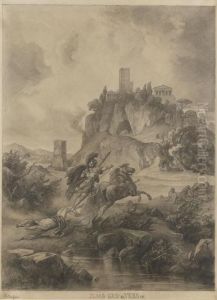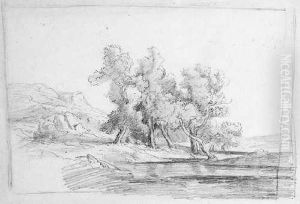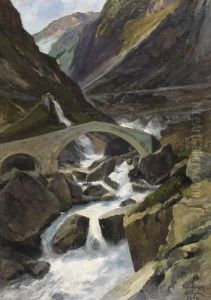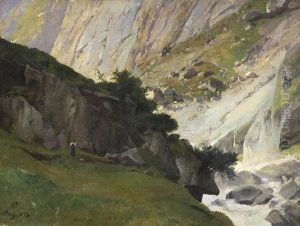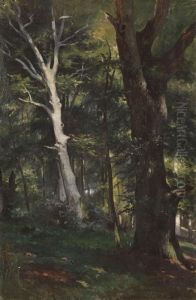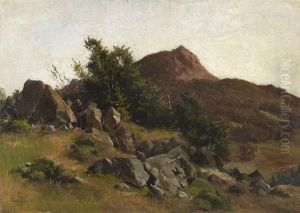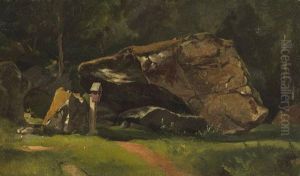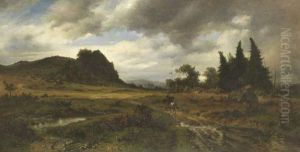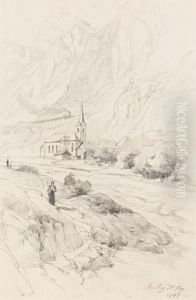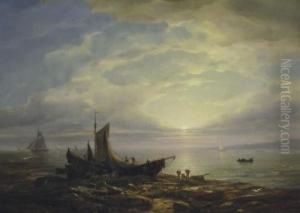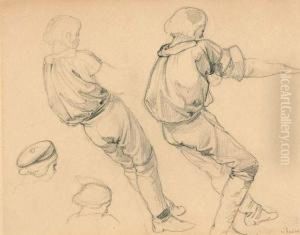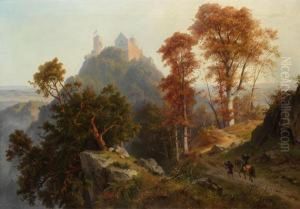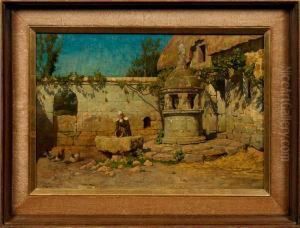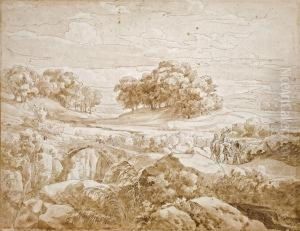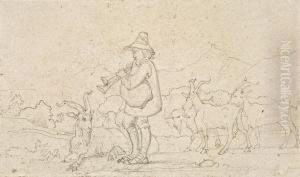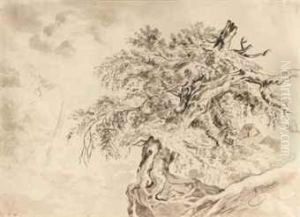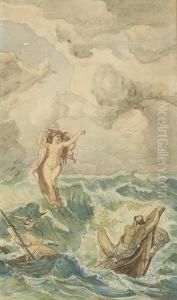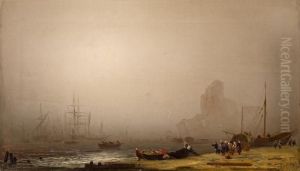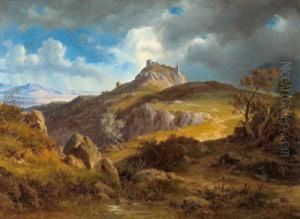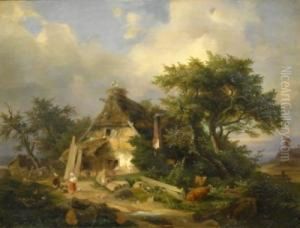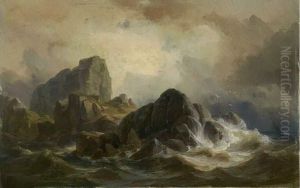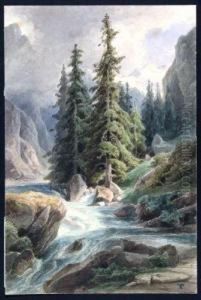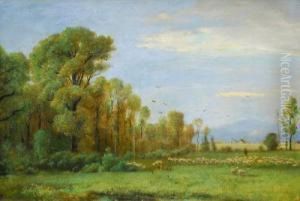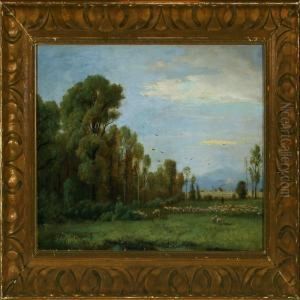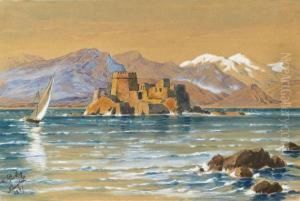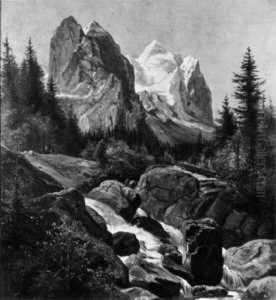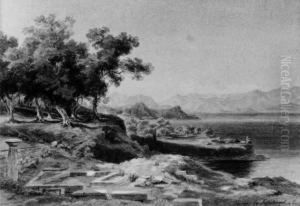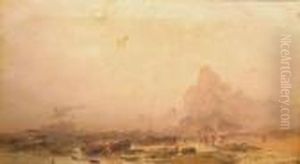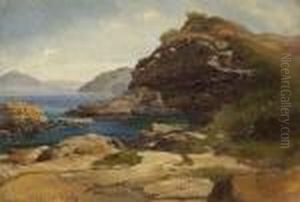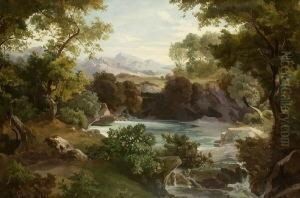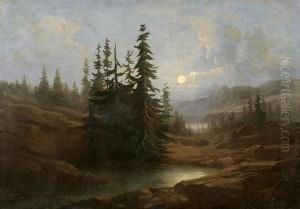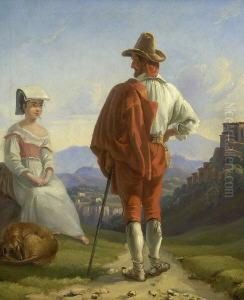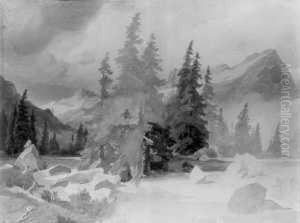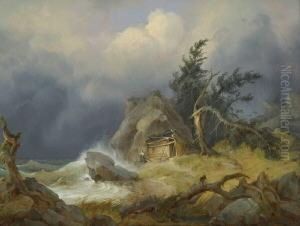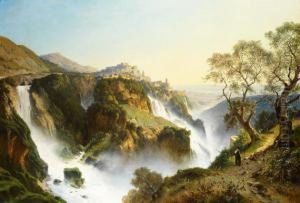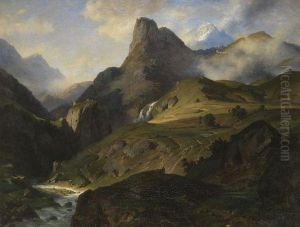Friedrich I Preller Paintings
Friedrich Preller the Elder, born on April 25, 1804, in Eisenach, Duchy of Saxe-Weimar, was a noted German landscape painter and etcher, esteemed for his development of landscape painting within the Romantic movement. His early education was under the guidance of various artists, including Johann Martin von Rohden. Preller’s work was significantly influenced by his travels, which included a formative journey to Italy from 1827 to 1831, where he studied the work of the old masters and was particularly inspired by the landscapes of Claude Lorrain.
After his return to Germany, Preller settled in Weimar, where he worked for the Grand Ducal court. He became a professor at the Weimar Art School, where he had a significant impact on the development of the school's reputation. His work began to show a unique blend of classical landscape composition with the natural beauty of the Thuringian countryside, leading to a distinctive style that earned him considerable acclaim.
Preller was commissioned to create a series of marine paintings for the Weimar castle, which became known as the 'Preller Sea Pictures.' These works were celebrated for their combination of romanticism and realism and contributed to his reputation as a master of landscape painting. He also worked on a series of frescoes depicting scenes from Homer's 'Odyssey' for the Grand Ducal museum, which further solidified his standing in the art world.
Throughout his career, Preller continued to travel and paint, with his work evolving over the years. His later pieces often reflected a more tranquil and reflective approach to nature, which differed from the dramatic intensity of his earlier works. Preller's dedication to capturing the spirit of the landscape influenced the next generation of German artists, and his legacy is seen in the way he bridged the gap between the Romantic landscape tradition and the emerging Realist movement.
Friedrich Preller the Elder passed away on April 5, 1878, in Weimar. His son, Friedrich Preller the Younger, also became a painter, continuing the artistic tradition of his family. Preller the Elder's contributions to landscape painting and his role as a teacher left an enduring mark on the art world, ensuring his place in the history of 19th-century German art.

